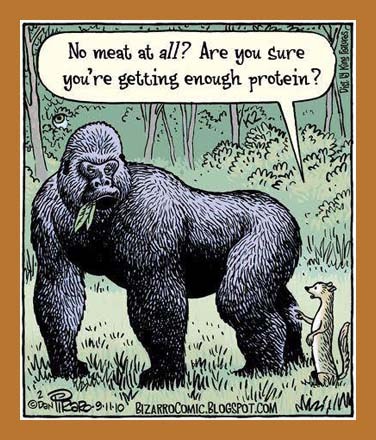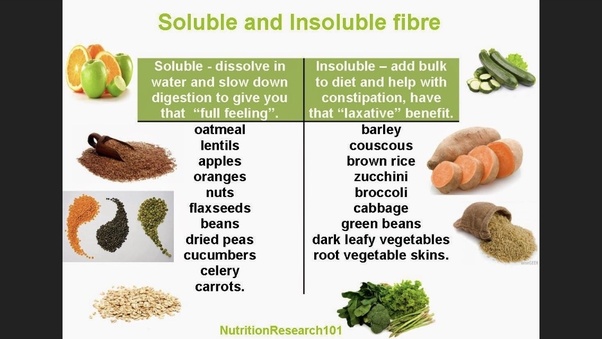Animal or Vegetable: Which protein is best for your health?
Along with carbohydrates and fats, protein is a necessary nutrient, instrumental in building, maintaining, and repairing body tissues.

A protein’s quality is determined by the content of nine essential amino acids, “essential” meaning that they can only be obtained from the diet. Amino acids are also known as the building blocks of protein, and all animal sources (meat, fish, poultry, eggs, and dairy) inherently contain all nine — a few plant sources also contain all nine.

Humans utilize 20 amino acids (AA): nine are essential, six are conditionally essential, and five are dispensable, which means they can be synthesized in the body. View this fun and informative video from Study.com where you can learn more about essential and nonessential amino acids.
Formerly dubbed “incomplete proteins” since most plants are missing at least one essential AA, this term is not appropriate to the way people eat. We don’t just eat one plant food daily, we eat many. You can be ‘vegan’ and avoid all animal-sourced foods and still consume sufficient essential amino acids (and nonessential) to stay healthy.
In fact, many stay healthier compared to those eating more animal foods.
We eat foods, not nutrients, and health is also dependent on the quality of the foods you eat, the amount you eat, and even how you eat (are you a ‘speed eater’?).
 Plant vs. animal protein – or both?
Plant vs. animal protein – or both?
As reported in Popular Science (June, 2018), “… study after study shows that it’s far better to get your necessary protein from plants.”
Although scientists admit that association is correlation and not causation, there are some significant benefits for eschewing meat entirely, or if you choose to eat meat, being much more selective about your animal protein sources.
Large population studies reliably demonstrate that even after adjusting for socioeconomic class, weight, exercise habits, and other influential factors, people who eat plant-based diets have less heart disease and fewer cases of many cancers compared to people who consume diets high in animal saturated fats (fats that are solid at room temperature).
Processed meats and charred meats are especially problematic. A World Health Organization study links processed meats to a high rate of cancer, especially colorectal cancer. Processed meats have been salted, cured, smoked, etc. and include pepperoni, hot dogs, sausages and salami, beef jerky, canned meat, lunchmeat, and bacon.
On the pro-side, animal protein does contain heme iron and vitamins B12, niacin, B5, B6, B7, and vitamins A and K. Animal protein has a higher amount of the amino acid leucine, which stimulates protein synthesis.
A plant-based diet with protein from beans, nuts, seeds, and vegetables offer a similar spectrum of nutrition, except for B12. This vitamin is available from fortified cereals and edible seaweed or spirulina (blue or green algae), or supplements.
Importantly, only plants contain dietary fiber.
Plant proteins are a good source of mono- and poly-unsaturated fatty acids, omega-3 fatty acids, antioxidants, vitamins, minerals, and fiber. Soluble fiber (the type of fiber in cooked oats, legumes, quinoa, barley, and the skins of fruits and vegetables) helps lower blood cholesterol and manage blood glucose. Insoluble fiber (the type of fiber that doesn’t absorb or dissolve in water e.g. bran layer of grains) is good for weight management and colon health.

How much protein is enough?
As reported in ScienceDaily.com, “The minimum protein requirement for healthy adults was set almost 15 years ago at .80 grams of protein per kilogram of body weight. There is a growing body of evidence that says this recommended dietary allowance (RDA) is not sufficient for older people and that they would benefit from eating more proteins.”
Current research shows that protein may play a role in aging and avoiding sarcopenia, or a loss of muscle mass and strength that’s associated with aging, and may help with weight management compared to diets lower in fat and carbohydrate.
Although some studies advocate 1 gram of protein per kilogram of body weight, research suggests that a better idea is to include a sufficient amount of protein with each meal…about 25-30 grams of high-quality protein per meal, for a total of about 75 grams to about 100 grams daily. Read more from my column on protein here.

Plant proteins:
Soy – contains all nine essential AAs, but there is a difference between whole soy foods and soy protein isolates, for example, from protein powder. The best and most nutritious way to enjoy soy is to eat soybeans (edamame and soy nuts too), tofu, tempeh (fermented soybean cake), and soymilk. Just a half-cup of tofu contains 20 grams of complete protein. Studies show populations who eat diets high in soy protein and low in animal protein have lower risks for breast and prostate cancers, and increasing whole soy foods lowers “bad” LDL cholesterol and triglycerides, can improve menopausal hot flashes, help maintain bone density and decrease fractures in postmenopausal women. Read more here.
Legumes and beans —including dried beans (black, red, or yellow); lentils; lupins (chochos); soybeans – especially young soybeans, or edamame; fava beans; and chickpeas (garbanzos). Cooked legumes contain between 15-26 grams of protein per cup. Legumes are a potent source of phytonutrients and anti-inflammatory quercitin, and are full of fiber, making them a low-glycemic-impact food. The type of fiber in lentils and beans helps reduce the risk of heart disease and diabetes, and legumes are linked to healthy weight management, and can even reduce the risk for some cancers. Enjoy in salads, soups, and stews. Read my column about chochos the “super bean” here.
Quinoa — In my column about quinoa I note that this super-nutritious seed is known as “the mother of all grains.” First cultivated over 5,000 years ago, it is native to the northern Andes and today is grown commercially in Ecuador, Peru, and Bolivia. Containing a full complement of essential amino acids, just a cup of cooked quinoa contains 8 grams of protein. Quinoa is naturally low in calories and rich in calcium, iron, manganese, magnesium, and phosphorus, and fiber. It cooks just like white rice in about 15 minutes, but it’s a zillion times more nutritious! I add quinoa to soups, to oatmeal, and it’s great in a hot pilaf or cold in salads.
Nuts & Seeds — all of them! Besides being rich in fiber and healthy fats, nuts and seeds contain a variety of amino acids — plus vitamins E, B6, B3 (niacin) and folate. Also rich in a variety of nutrients including minerals calcium, magnesium, iron, selenium, phosphorus. Don’t forget sunflower seeds, flax, sesame, chia and hemp seeds, and for more info, click here.
All whole grains, oats, spinach, collards, split peas, and broccoli are good sources of protein in a plant-based diet. Even avocado contains a small amount of protein too.
Animal proteins: Animal proteins contain all essential amino acids, plus vitamins B12, B6, iron, selenium, and other important nutrients. However, some animal meat is also high in saturated fat and calories, making regular consumption hard on weight management. Not all animal proteins are nutritionally equal — here are some top choices.

Eggs — All the protein is in the white (about 6 grams per egg), but the yolk is rich in lutein and healthy fats, vitamins, and minerals. I make a delicious frittata with vegetables and a bit of cheese — email me for the recipe.
Greek yogurt — Although all dairy foods contain protein, Greek-style (strained) yogurt is very thick and concentrated in protein, about 48 percent of its calories. Just 6 oz. (170 grams) has 17 grams of protein while the same amount of regular milk or yogurt offers only about 6 grams. Six ounces of Greek yogurt contains 21 percent of your Daily Value (DV) for vitamin B-12 too, and 18 percent of your DV for calcium. Skip sugar-sweetened yogurts and buy natural, unflavored yogurt, and flavor yourself with sweet fruit or a few drops of vanilla extract and a teaspoon of honey.
Fish — High in protein and healthy fats, including omega-3 fatty acids, fish are a good source of vitamin D and iodine. However, large, predatory fish like king mackerel and swordfish are more likely to accumulate heavy metals — make these infrequent choices. Smaller fish like sardines and trout are great if you eat fish frequently. Wild fish tend to have more omega-3s. Preparation is key to good health, so choose fish grilled, baked, broiled, or poached, instead of deep-fried. Shrimp and shellfish are good choices too. Read my column about fish here.
Meat — Red meat is any meat that comes from a mammal — from a cow, pig, sheep, goat, bison, or other. A ‘white meat’ is from fish or poultry. If you choose to eat red meat, instead of making it the main focus of the meal, do as the healthiest people on earth do: People in four of the five “Blue Zones” consume meat, but they do so sparingly, using it as a celebratory food, a small side, or a way to flavor dishes — for instance, a stir-fry or a big vegetable stew with some choice cuts. Since most of the saturated fat is in the skin of the bird, skinless poultry is a lean source of protein. On average, a 3-ounce cooked serving of meat contains about 50 percent of the average DV for protein — combined with plant proteins you only need about 3 ounces a day to achieve a healthy goal. Choose lean cuts like the top or bottom round or sirloin, instead of rib-eye or T-bone or skirt steak. Depending on your size, activity level, and health, you may need more or less animal protein, depending on the rest of your diet.
For nutritional details for various types of protein, read more from Fitness Volt here.
Research shows that plants are good for your heart
A recent study found that protein from nuts and seeds is better for the heart than meat protein. Researchers found that people who consumed large amounts of meat protein had a 60-percent increase in cardiovascular disease (CVD), while people who consumed a large amount of protein from nuts and seeds experienced a 40-percent reduction in CVD.
I always say, “Don’t eliminate, substitute!” If you’re a meat eater, choose healthier options. Fish, shrimp, skinless chicken or turkey, and eggs are all easy and tasty options. And if you want to improve your diet, choose a day a week to really go wild — and eat only plants! Click here for a bunch of easy and delicious non-meat recipes from EatingWell.com

Susan Burke March, a Cuenca expat, is a Registered Dietitian Nutritionist and a Certified Diabetes Educator who specializes in smart solutions for weight loss and diabetes-related weight management. She is the author of Making Weight Control Second Nature: Living Thin Naturally — a fun and informative book intended to liberate serial dieters and make healthy living and weight control both possible and instinctual over the long term. Do you have a food, nutrition or health question? Write to her – SusanTheDietitian@gmail.com
Sources:
Aging and Disease. Role of dietary protein and muscular fitness on longevity and aging.
American Family Physician. Soy: A complete source of protein.
CuencaHighLife.com. Protein! Are you eating enough?
Fitness Volt. 12 foods highest in protein.
Loma Linda University Health News. Study says meat protein is unhealthy, but protein from nuts and seeds is heart smart.
Medical News Today. What is the difference between animal and plant proteins?
Medical News Today. Top 15 sources of plant-based protein.
MedlinePlus.gov. Amino acids.
MyFoodData.com. 16 Nuts and Seeds High in Protein.
Popular Science. Why plant protein is better for you than animal protein.




















